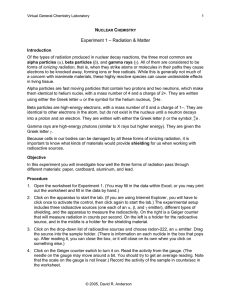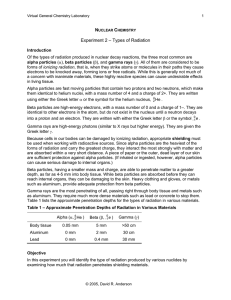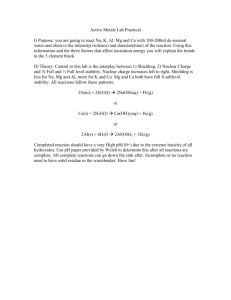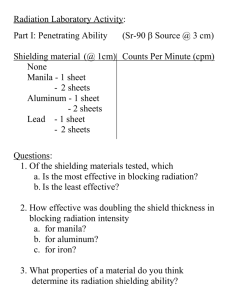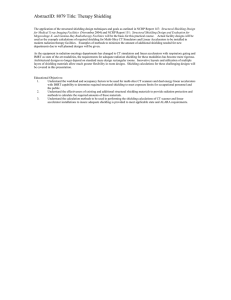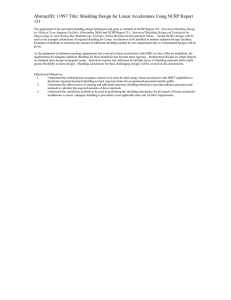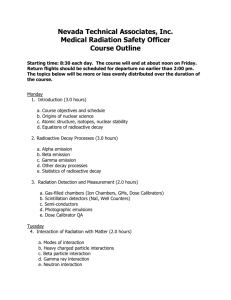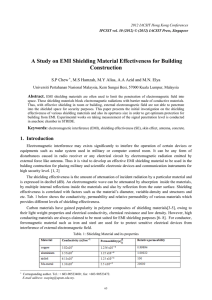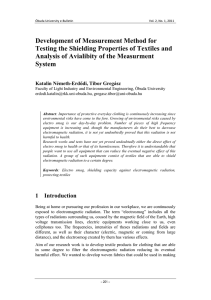N C Experiment 3 – Shielding
advertisement
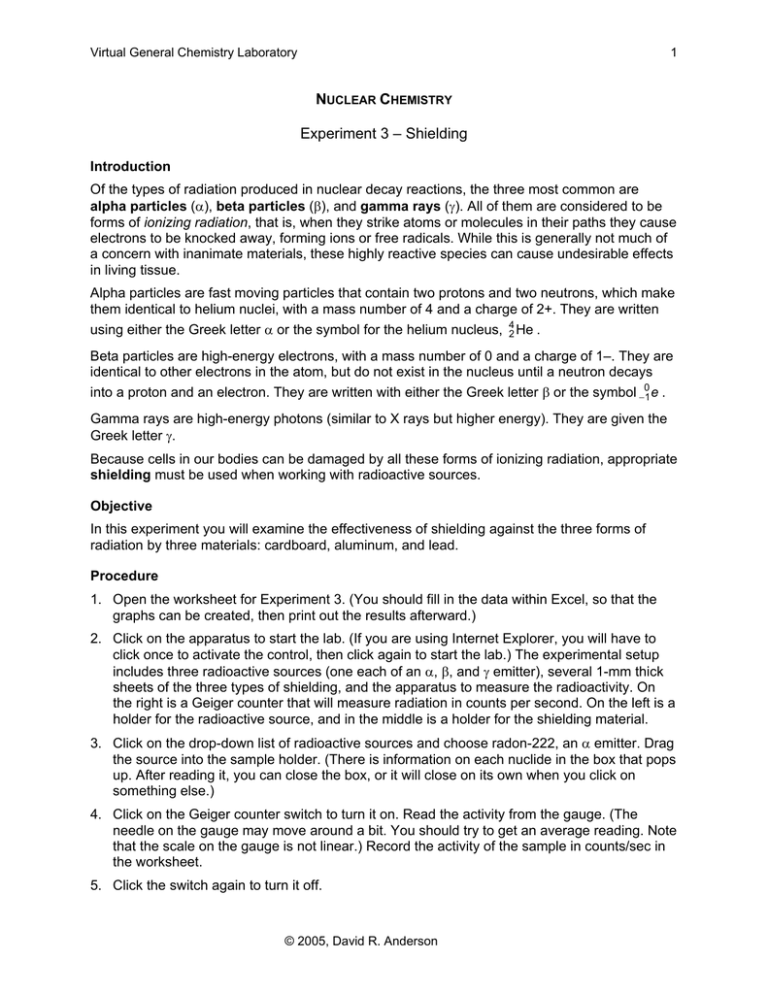
Virtual General Chemistry Laboratory 1 NUCLEAR CHEMISTRY Experiment 3 – Shielding Introduction Of the types of radiation produced in nuclear decay reactions, the three most common are alpha particles (α), beta particles (β), and gamma rays (γ). All of them are considered to be forms of ionizing radiation, that is, when they strike atoms or molecules in their paths they cause electrons to be knocked away, forming ions or free radicals. While this is generally not much of a concern with inanimate materials, these highly reactive species can cause undesirable effects in living tissue. Alpha particles are fast moving particles that contain two protons and two neutrons, which make them identical to helium nuclei, with a mass number of 4 and a charge of 2+. They are written using either the Greek letter α or the symbol for the helium nucleus, 42 He . Beta particles are high-energy electrons, with a mass number of 0 and a charge of 1–. They are identical to other electrons in the atom, but do not exist in the nucleus until a neutron decays into a proton and an electron. They are written with either the Greek letter β or the symbol −01 e . Gamma rays are high-energy photons (similar to X rays but higher energy). They are given the Greek letter γ. Because cells in our bodies can be damaged by all these forms of ionizing radiation, appropriate shielding must be used when working with radioactive sources. Objective In this experiment you will examine the effectiveness of shielding against the three forms of radiation by three materials: cardboard, aluminum, and lead. Procedure 1. Open the worksheet for Experiment 3. (You should fill in the data within Excel, so that the graphs can be created, then print out the results afterward.) 2. Click on the apparatus to start the lab. (If you are using Internet Explorer, you will have to click once to activate the control, then click again to start the lab.) The experimental setup includes three radioactive sources (one each of an α, β, and γ emitter), several 1-mm thick sheets of the three types of shielding, and the apparatus to measure the radioactivity. On the right is a Geiger counter that will measure radiation in counts per second. On the left is a holder for the radioactive source, and in the middle is a holder for the shielding material. 3. Click on the drop-down list of radioactive sources and choose radon-222, an α emitter. Drag the source into the sample holder. (There is information on each nuclide in the box that pops up. After reading it, you can close the box, or it will close on its own when you click on something else.) 4. Click on the Geiger counter switch to turn it on. Read the activity from the gauge. (The needle on the gauge may move around a bit. You should try to get an average reading. Note that the scale on the gauge is not linear.) Record the activity of the sample in counts/sec in the worksheet. 5. Click the switch again to turn it off. © 2005, David R. Anderson Virtual General Chemistry Laboratory 2 6. Click on the drop-down list of shielding materials and choose a single sheet (1 mm) of one of them. Drag the shielding into its holder in the apparatus. 7. Again click on the Geiger counter switch, and again record the activity in the appropriate column in the worksheet. 8. Repeat steps 6 and 7 for the other types of shielding material. 9. Click on the drop-down list of radioactive sources and choose iron-59, a β emitter. Drag the source into the sample holder and measure its radioactivity. 10. Choose one of the shielding materials and measure the radioactivity using 1, 2, 3, and 4 mm thicknesses. Record the activity values in the appropriate cells of the worksheet. Note the graph developing as you enter data. 11. Repeat step 10 for the other shielding materials. 12. Repeat steps 9-11 for strontium -85, a γ emitter. © 2005, David R. Anderson
